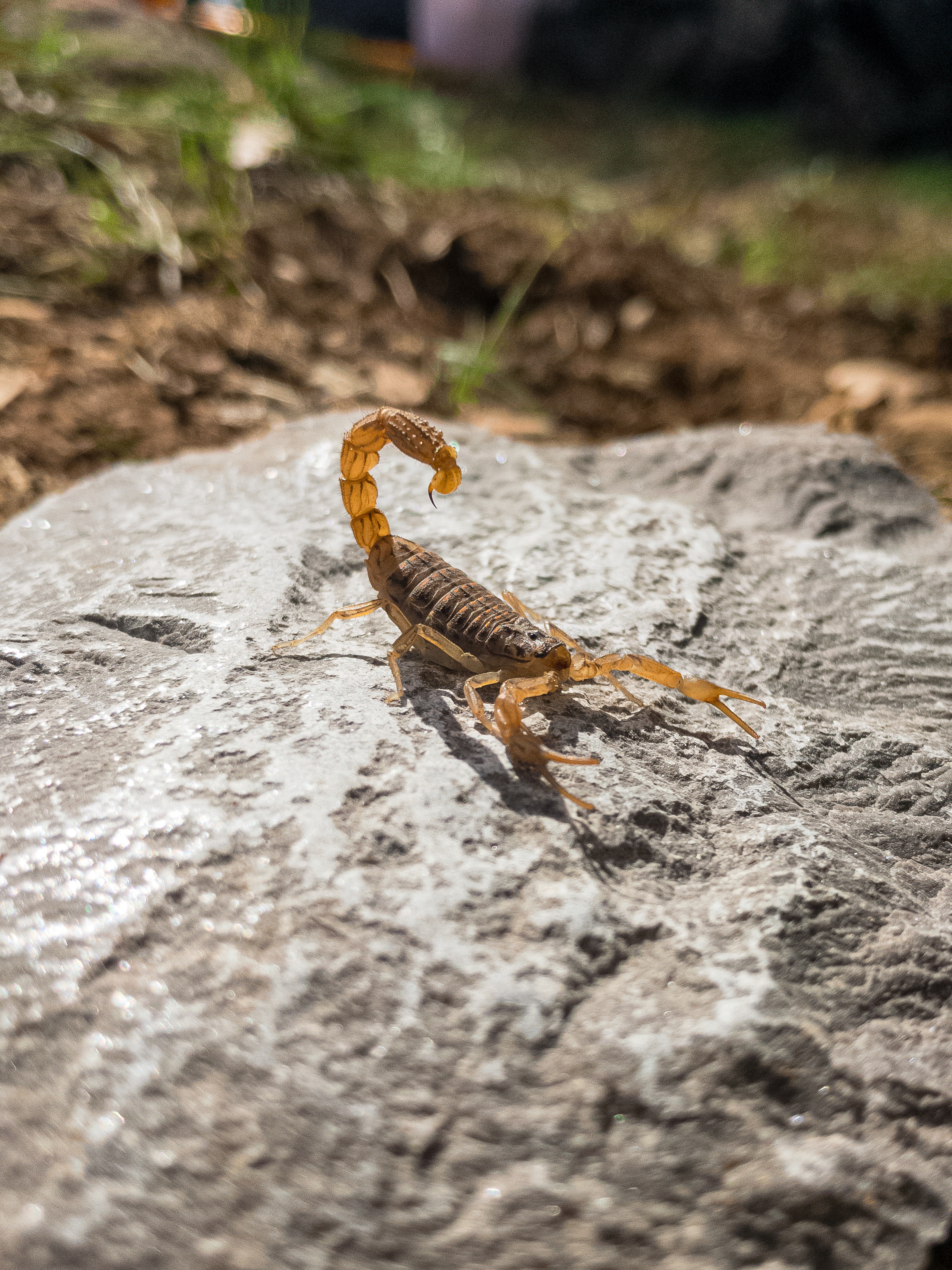Venom Part 2
Yes, I have tasted my own venom. Hardly what I would call an “experience,” to be honest. A little metallic, but mostly just water.
Why the shocked face? Were you expecting a harrowing tale of me hanging onto life? I swear, you humans don’t just expect the worst, you crave it. Sorry to disappoint, but my…what did you call it, the “death saliva?” It’s useless in the stomach. Most of whatever’s in there is harmless in all of that acid. Besides, my venom really only clots blood. And as we’ve found out, it doesn’t clot mammalian blood. You and your weird platelet-thingies are completely unaffected aside from maybe a little swelling.
But ask me if I can shoot my venom. Took me years, but with the right angle and timing, I am a natural sniper with these fangs. Wait, I feel a sneeze coming on– point to a book over there. Twenty credits says I can hit it!
So, last time we were talking about venoms… or, at least a teeny tiny selection of venoms. More of an appetizer for what is out there. And it was more mechanistic than delving into the possible uses of venom in your writing.
Now, we get to explore the ways you can incorporate venoms into your fiction, be it for plot or just basic worldbuilding! Now, pick your poison– er, venom, and let’s get to it!
Venoms… for Murder

DISCLAIMER: This is for fantasy/science fiction plot purposes. I am not suggesting the reader use these as tools of destruction. If you do… well, I have a disclaimer, so I can’t be culpable for your machinations :) Neener-neener-neener.
Not the highest use on my list, but still one to consider for plots. Spoilers for Series of Unfortunate Events: The Reptile Room, venom is the murder weapon of choice… although it’s injected into the victim via a syringe, not from a bite. It’s used like your usual mainstream poison. But the use of venom does link the murder to an animal rather than a person, so it’s a good red herring.
And it would be a great way to falsely accuse a character. If viper venom is found to be the cause of death, the innocent snake milker may be a key suspect (and yes, “snake milker” is a real job. They milk the venom from snake fangs. It’s gnarly). Heck, if they’re the main character, they may be trying to prove their innocence while protecting the reputation of their profession! Great motivation, if you ask me!
But let’s consider an even simpler solution: using venom to induce anaphylaxis thanks to “venom hypersensitivity.” I’m thinking specifically of bee venom, but it can be from any stinging insect venom. If the victim in question is allergic to the venom, the murderer would only need to prick the victim with a given amount of the venom, and voila, the rest is history. Granted, the murderer would also need to make sure the victim can’t get a hold of their medications in time, but trying to pin a bee sting on a murderer? That would be insanely difficult… and deliciously, maliciously clever.
Venoms for Laboratory Settings

If you’re using a laboratory setting, might I suggest looking into how we scientists use venom for our own purposes?
In my lab, we use convulxin isolated from viper venom to force our platelets to clot in our experiments. This venom peptide binds to a platelet receptor on the surface of the cell called GPVI, and using this venom allows us to examine the effects of, say, drugs on the GPVI pathway. Other labs studying coagulation of platelets use the snake venom RVV. Similarly, labs can also utilize spider venom that contain neurotoxins for neurobiology studies.
Heck, there are labs that are dedicated to just studying the components of a specific type of venom! Some labs study spider venom, others jellyfish… you name it! Why study a venom? In determining the mechanisms of the venom (what organs it attacks, how it is stored, etc), scientists can possibly look at treatments for patients. Or, they can learn how to hijack the venom, isolating the useful toxins from it for either other experiments or possible medications (see below).
While on the topic of treatments, you could explore how labs produce antivenom from “milked” snakes or other venom-producing animals. I think that would be a super cool STEM job for a protagonist or side character, honestly. You isolate the venom and then inject just a little into a host animal (for example, a horse).
Key word: small amount. You want the animal to live, because the animal will produce antibodies against the venom peptides.Once you isolate those antibodies, you can turn around and inject those into a victim of a venomous bite. The antibodies will bind to the venom components and keep them from interacting with the cells and cell receptors.
Venoms for Therapy
Ok, this is admittedly similar to the previous point, but needed its own subtitle because it’s more than simply using or isolating venom in a lab.
See, venoms are a rich source of peptides (small proteins), and can be a goldmine for medicine if you know what you’re looking for. Captopril, a blood pressure medication, was derived from snake venom, as was Eptifibatide (an anti-platelet drug). According to a review from Natalie J. Saez and Volker Herzig in 2019, spider venom is being considered as a source of medically applicable peptides due to their potency, and is under scrutiny as a possible anti-cancer treatment (specifically a component from the Lycosa singoriensis venom).
I also went down a deep rabbit whole for Bee Venom therapy (BVT) where, yes, people will inject bee venom into their skin for different anti-inflammatory effects. I, being terrified of and slightly allergic to bees, cannot fathom people willingly getting stung to treat arthritis. Turns out the biochemical cocktail of a bee sting contains much more than my favorite enzyme. Melittin, a peptide in bee venom that disrupts cell surfaces, actually produces anti-inflammatory effects in patients at low doses! The review discussing BVT also lists numerous possible applications for bee venom in treating Parkinsons, Alzheimers, and even a possible anti-viral medication (although there aren’t a ton of articles on this, so these seem to be more thought experiments for possible BVT uses).
Now, I do personally think you should go get stung a bunch of times to treat your afflictions? …No, please no. Abstain from running into a swarm of bees; you will get hurt. but it has been used as an alternative therapy for thousands of years, and would be a great place to start if you’re looking to incorporate venom therapy practices in your fictional work!
(Edit: I don’t think I made this clear in the first iteration of this post, but I am not recommending BVT as a treatment. The review I was looking at was examining what venom components could possibly be anti-inflammatory, NOT whether the treatment had better outcome than over-the-counter or perscribed medications)
Before we move on, I must talk about the cone snail’s venom, which contains a form of insulin. At my very own University of Utah, a lab is developing a hybrid insulin peptide where they combine characteristics of the human insulin hormone and the cone snail’s fast-acting insulin hormone to produce the smallest biosynthetic form of insulin for diabetic patients with high potency. Having a small peptide is crucial because it makes the peptide easier to produce.
Takeaway from this section: one creature’s deadly venom is another’s drug…
Venoms for Worldbuilding

…Which is a great lead into this section!
Picture this: venomous, humanoid species. Be it reptilian folk with fangs, or an evolved form of the Slow Loris, imagine a group of technologically advanced species with the ability to produce and inject venom. How would these societies look like? How would cultural practices form around venom production and injection.
Maybe a scorpion-based species has practices around their stinger being displayed and fighting style incorporating their deadly venomous strikes. Perhaps it’s polite to cover your fangs/stinger unless threatened. Maybe spitting venom like a cobra is common practice and the colloquial speech incorporates the activity into everyday jargon. If the society is technologically advanced, do they study their own venom, much like I study human blood?
Perhaps I don’t read the right books, but I really haven’t seen this idea played with in fiction. And this is honestly a missed opportunity. And this isn’t even in creating species, I don’t see venom really used much at all except for the occasional plot point. “Oh no, [character name] has been bitten, we must search for a cure” kind of thing.
What if you had a city who harvested a certain type of jellyfish for either poison production or for medication? (Yes, you can harvest jellyfish for venom, it turns out. The rabbit holes I fall into for the blog!) What if you had a special species of arachnids with venom that was hallucinogenic to humans, and people deliberately went out of their way to be bitten by these creatures just to get a high? What if you had a society where you kept deadly snakes as pets just so you can extract their venom
Let’s go a step further, and what if there were two intelligent humanoid species, and one produced venom that had medicinal use for the other. How would these two groups interact BESIDES one turning the other into slaves/servants? This could be a fascinating political intrigue plot, where the groups are struggling to create trade routes for this venom specifically. Or would they deliberately start fights with the venomous group, just so the soldiers can be bit by their enemies?
Or you have assassins, with venomous spurs on their limbs not unlike a platypus. From a distance, they look human… until they get too close. Mwahaha…
Takeaways?
I may have gone characteristically off the deep-end towards the latter bit of this post, but I can’t tell you how much fun this was to write and reserach for! Venoms provide such a goldmine for stories, and even I didn’t realize it!
(Fun fact: I actually started this two-part venom series just so I could talk about hyluronidase, and now look where we are!)
Now I have to go and write down all of my ideas for venomous species… or, they will be incorperated into my homebrew D&D campaign. I am such a nerd :)
If you have great book recomendations that incorperate venom into the plot or in the worldbuilding, let us know in the comments down below! Even better, if you have an amazing idea for incorperating venom that you think I should have covered, also comment down below!
